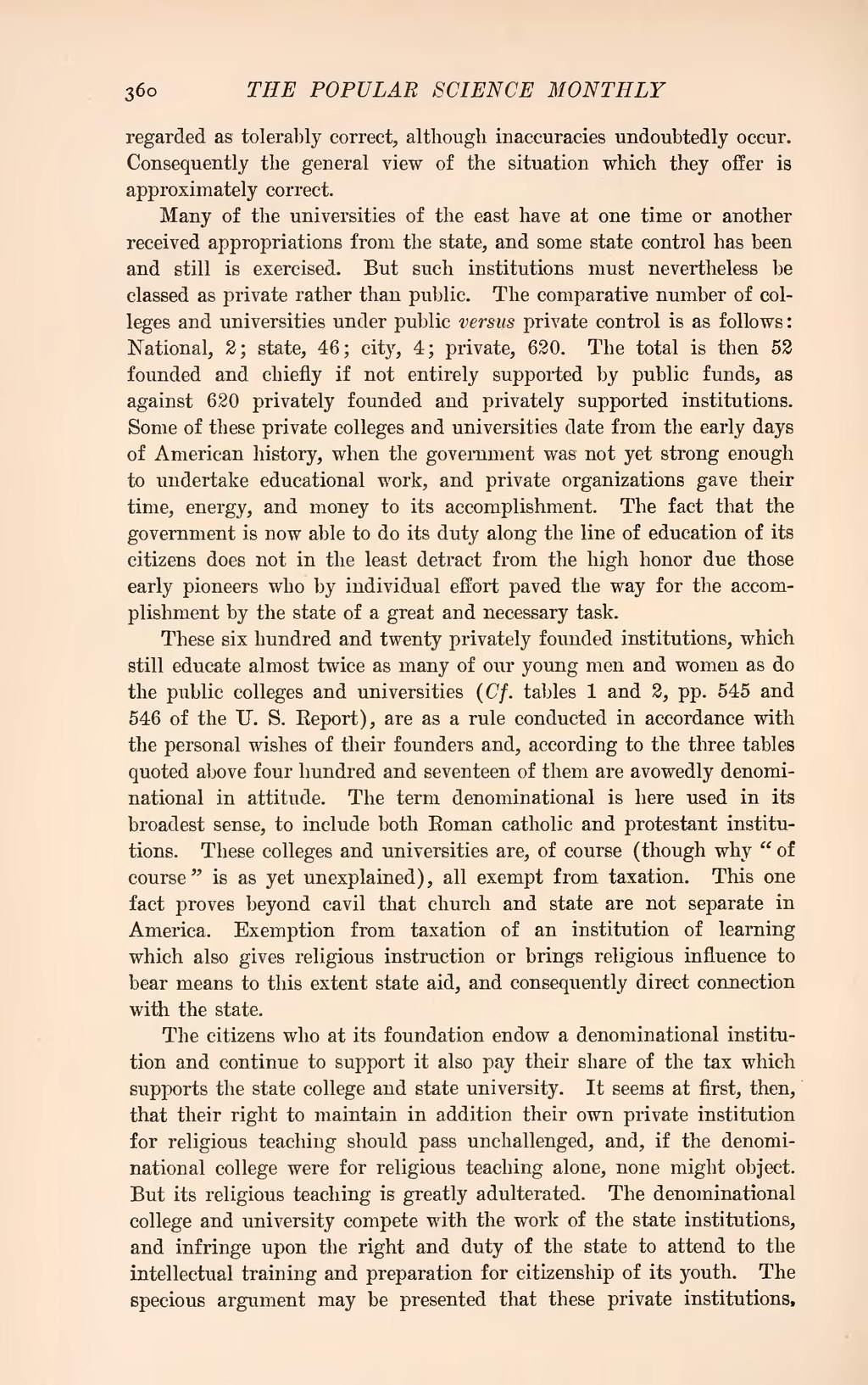regarded as tolerably correct, although, inaccuracies undoubtedly occur. Consequently the general view of the situation which they offer is approximately correct.
Many of the universities of the east have at one time or another received appropriations from the state, and some state control has been and still is exercised. But such institutions must nevertheless be classed as private rather than public. The comparative number of colleges and universities under public versus private control is as follows: National, 2; state, 46; city, 4; private, 620. The total is then 52 founded and chiefly if not entirely supported by public funds, as against 620 privately founded and privately supported institutions. Some of these private colleges and universities date from the early days of American history, when the government was not yet strong enough to undertake educational work, and private organizations gave their time, energy, and money to its accomplishment. The fact that the government is now able to do its duty along the line of education of its citizens does not in the least detract from the high honor due those early pioneers who by individual effort paved the way for the accomplishment by the state of a great and necessary task.
These six hundred and twenty privately founded institutions, which still educate almost twice as many of our young men and women as do the public colleges and universities (Cf. tables 1 and 2, pp. 545 and 546 of the U. S. Report), are as a rule conducted in accordance with the personal wishes of their founders and, according to the three tables quoted above four hundred and seventeen of them are avowedly denominational in attitude. The term denominational is here used in its broadest sense, to include both Roman catholic and protestant institutions. These colleges and universities are, of course (though why "of course" is as yet unexplained), all exempt from taxation. This one fact proves beyond cavil that church and state are not separate in America. Exemption from taxation of an institution of learning which also gives religious instruction or brings religious influence to bear means to this extent state aid, and consequently direct connection with the state.
The citizens who at its foundation endow a denominational institution and continue to support it also pay their share of the tax which supports the state college and state university. It seems at first, then, that their right to maintain in addition their own private institution for religious teaching should pass unchallenged, and, if the denominational college were for religious teaching alone, none might object. But its religious teaching is greatly adulterated. The denominational college and university compete with the work of the state institutions, and infringe upon the right and duty of the state to attend to the intellectual training and preparation for citizenship of its youth. The specious argument may be presented that these private institutions,
